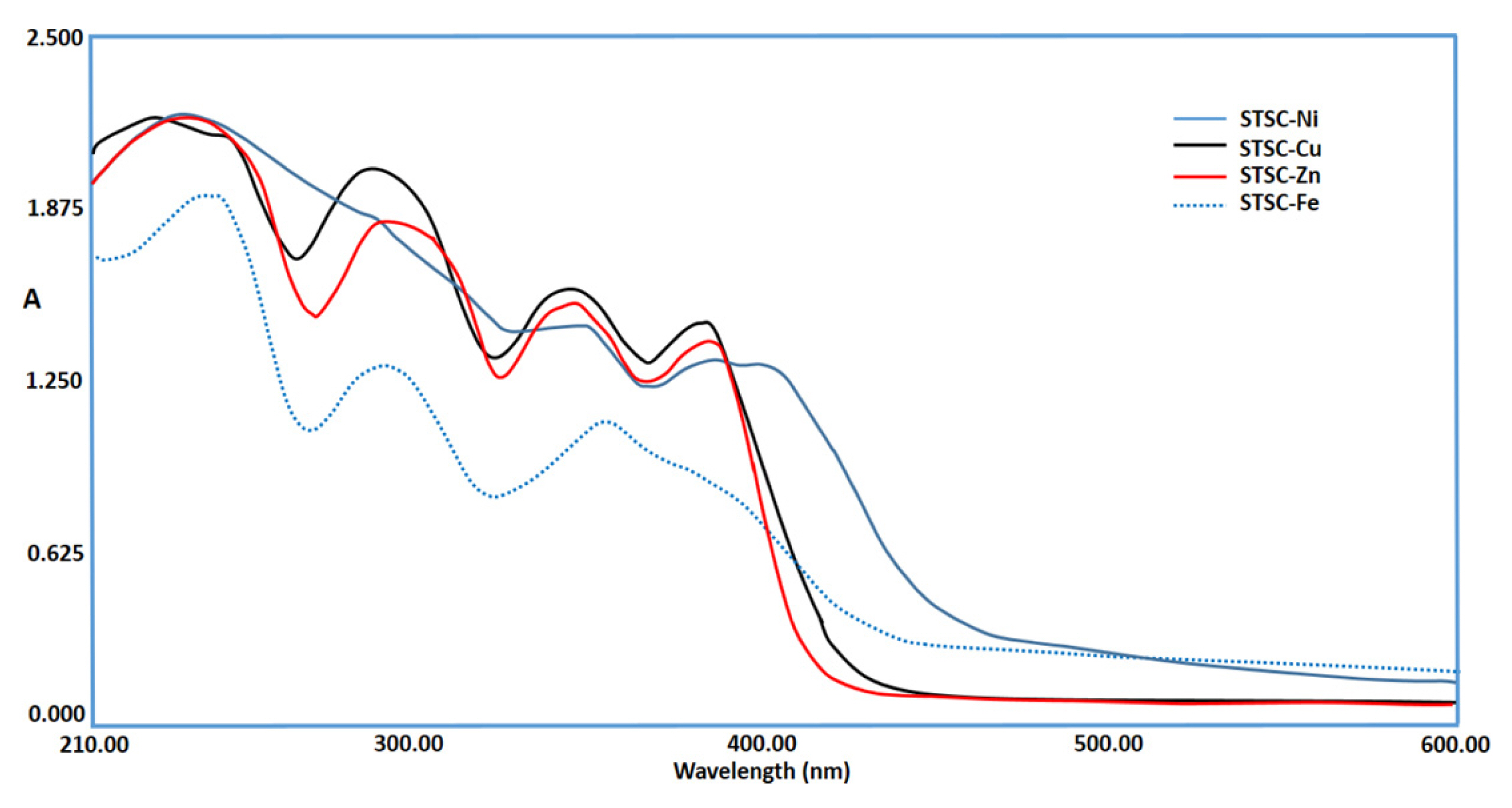[1] A.S. Fouda, A.M. Eldesoky, M.A. Elmorsi, T.A. Fayed and M.F. Atia,
Int. J. Electrochem. Sci.,
2013,
8, 10219–10238.

[2] A.S. Fouda, S.M. Abd El-Wahab, M.S. Attia, A.O. Youssef and H.O. Elmoher, Der Pharma Chem., 2015, 7, 74–87.
[3] E. Sadeghi Meresht, T. Shahrabi Farahani and J. Neshati,
Corros. Sci.,
2012,
54, 36–44.

[4] J. Tang, Y. Shao, T. Zhang, G. Meng and F. Wang,
Corros. Sci.,
2011,
53, 1715–1723.

[5] B.M. Johnson, L.E. Kanagy, J.H. Rodgers and J.W. Castle,
Water. Air. Soil Pollut.,
2008,
191(
1-4), 33–54.

[6] A. Popova, M. Christov and A. Vasilev,
Corros. Sci.,
2011,
53(
5), 1770–1777.

[7] X. Li, S. Deng and H. Fu,
Corros. Sci.,
2011,
53(
1), 302–309.

[8] M.A. Migahed, R.O. Aly and A.M. Al-Sabagh,
Corros. Sci.,
2004,
46(
10), 2503–2516.

[9] M.A. Migahed, M. Abd-El-Raouf, A.M. Al-Sabagh and H.M. Abd-El-Bary,
Electrochim. Acta.,
2005,
50(
24), 4683–4689.

[10] M.A. Migahed, A.A. Farag, S.M. Elsaed, R. Kamal and H.A. El-Bary,
Chem. Eng. Commun.,
2012,
199(
11), 1335–1356.

[11] S. Rajendran, K. Anuradha, K. Kavipriya, A. Krishnaveni, J. Jeyasundari and V. Sribharathy,
Port. Electrochim. Acta.,
2013,
31(
3), 141–155.

[12] K. Kavipriya, J. Sathiyabama and S. Rajendran, J. Sci., 2015, 5(6), 390–396.
[13] S. Abuthahir, K.J. Vigrant, R. Vignesh, C. Vignseh, J.A. Nasser, Vijaya and Rajendran, J. Chem. Pharm. Res., 2015, 7(10S), 193–200.
[14] A. Bansiwal, P. Anthony and S.P. Mathur,
Br. Corros. J.,
2000,
35(
4), 301–303.

[15] E.E. Ebenso, P.C. Okafor, O.E. Offiong, B.I. Ita, U.J. Ibok and U.J. Ekpe, Bull. Electrochem., 2001, 17(10), 459–464.
[16] T. Sethi, A. Chaturvedi, R. Upadhyay and S.P. Mathur, J. Chil. Chem. Soc., 2007, 52(3), 1206–1213.
[17] K. Srivastava, A. Kumar and R. Singh, J. Chem. Pharm. Res., 2010, 2(6), 68–77.
[18] M.M. Deshpande, S.B. Junne, D.V. Saraf and P.A. Kulkarni, J. Chem. Pharm. Res., 2010, 2(3), 453–458.
[19] S.B. Ade, M.N. Deshpande and D.G. Kolhatkar, J. Chem. Pharm. Res., 2012, 4(2), 1033–1035.
[20] S.K. Saha, P. Ghosh, A.R. Chowdhury, P. Samanta, N.C. Murmu, A.K. Lohar and P. Banerjee, Can. Chem. Trans., 2014, 2, 381–402.
[21] N. Khalil,
Electrochim. Acta.,
2003,
48(
18), 2635–2640.

[22] I. Lukovits, A. Shaban and E. Kálmán,
Electrochim. Acta.,
2005,
50(
20), 4128–4133.

[23] M. Abdallah, I. Zaafarany, J.H. Al-Fahemi, Y. Abdallah and A.S. Fouda,
Int. J. Electrochem. Sci.,
2012,
7(
8), 6622–6637.

[24] A.S. Fouda, M. Abdallah, A.M. Atya and H.D. Sabaa,
Corrosion.,
2012,
68(
7), 610–619.

[25] K.F. Khaled and M.M. Al-Qahtani,
Mater. Chem. Phys.,
2009,
113(
1), 150–158.

[26] S.H.A. El Fetoh, A.E. Eid, A.T.A. El-Kareem and M.A. Wassel, J. Mater. Sci. Technol., 1998, 14(5), 434–440.
[27] M.J. Frisch, G.W. Trucks, H.B. Schlegel, G.E. Scuseria, M.A. Robb, J.R. Cheeseman, J.A. Montgomery Jr., T. Vreven, K.N. Kudin, J.C. Burant, J.M. Millam, S.S. Iyengar, J. Tomasi, V. Barone, B. Mennucci, M. Cossi, G. Scalmani, N. Rega, G.A. Petersson and et al, Gaussian 03 2004, Revision E.01.
[28] A.K. Rappe, C.J. Casewit, K.S. Colwell, W.A. Goddard III and W.M. Skiff,
J. Am. Chem. Soc.,
1992,
114(
25), 10024–10035.

[29] E.I. Ioannidis, T.Z.H. Gani and H.J. Kulik,
J. Comput. Chem.,
2016,
37(
22), 2106–2117.

[30] E.A. Noor and A.H. Al-Moubaraki,
Mater. Chem. Phys.,
2008,
110(
1), 145–154.

[31] X. Li, S. Deng and H. Fu,
Corros. Sci.,
2009,
51(
6), 1344–1355.

[32] R. Solmaz, G. Kardaş, M. Çulha, B. Yazıcı and M. Erbil,
Electrochim. Acta.,
2008,
53(
20), 5941–5952.

[33] M.A. Migahed and I.F. Nassar,
Electrochim. Acta.,
2008,
53(
6), 2877–2882.

[34] S. Rajendrana, R.M. Joany, B. V Apparao and N. Palaniswamy, Indian J. Chem. Technol., 2002, 9(3), 197–200.
[35] S.S.S. Abuthahir, A.J.A. Nasser and S. Rajendran, Eur. Chem. Bull., 2014, 3(1), 40–45.
[36] H. Amar, T. Braisaz, D. Villemin and B. Moreau,
Mater. Chem. Phys.,
2008,
110(
1), 1–6.

[37] R. Kalaivani, B. Narayanaswamy, J.A. Selvi, A.J. Amalraj, J. Jeyasundari and S. Rajendran,
Port. Electrochim. Acta.,
2009,
27(
2), 177–187.

[38] J. Sathiyabama, S. Rajendran, J.A. Selvi and J. Jeyasundari,
Open Corros. J.,
2009,
2, 77–82.

[39] A.S.S. Raja and S. Rajendran, J. Electrochem. Sci. Eng., 2012, 2(2), 91–104.
[40] D. Gopi, N. Bhuvaneswaran and S. Rajeswari, Bull. Electrochem., 2002, 18(1), 29–34.
[41] D. Gopi and S. Rajeswari,
J. Solid State Electrochem.,
2002,
6(
3), 194–202.

[42] R.G. Pearson,
J. Org. Chem.,
1989,
54(
6), 1423–1430.

[43] J. Padmanabhan, R. Parthasarathi, V. Subramanian and P.K. Chattaraj,
J. Phys. Chem. A.,
2007,
111(
7), 1358–1361.

[44] T.A. Yousef, G.M. Abu El-Reash and R.M. El Morshedy,
Polyhedron.,
2012,
45(
1), 71–85.

[45] T.A. Yousef, G.M. Abu El-Reash and R.M. El Morshedy,
J. Mol. Struct.,
2013,
1045, 145–159.

[46] M. Govindarajan, S. Periandy and K. Carthigayen,
Spectrochim. Acta Part A Mol. Biomol. Spectrosc.,
2012,
97, 411–422.




































